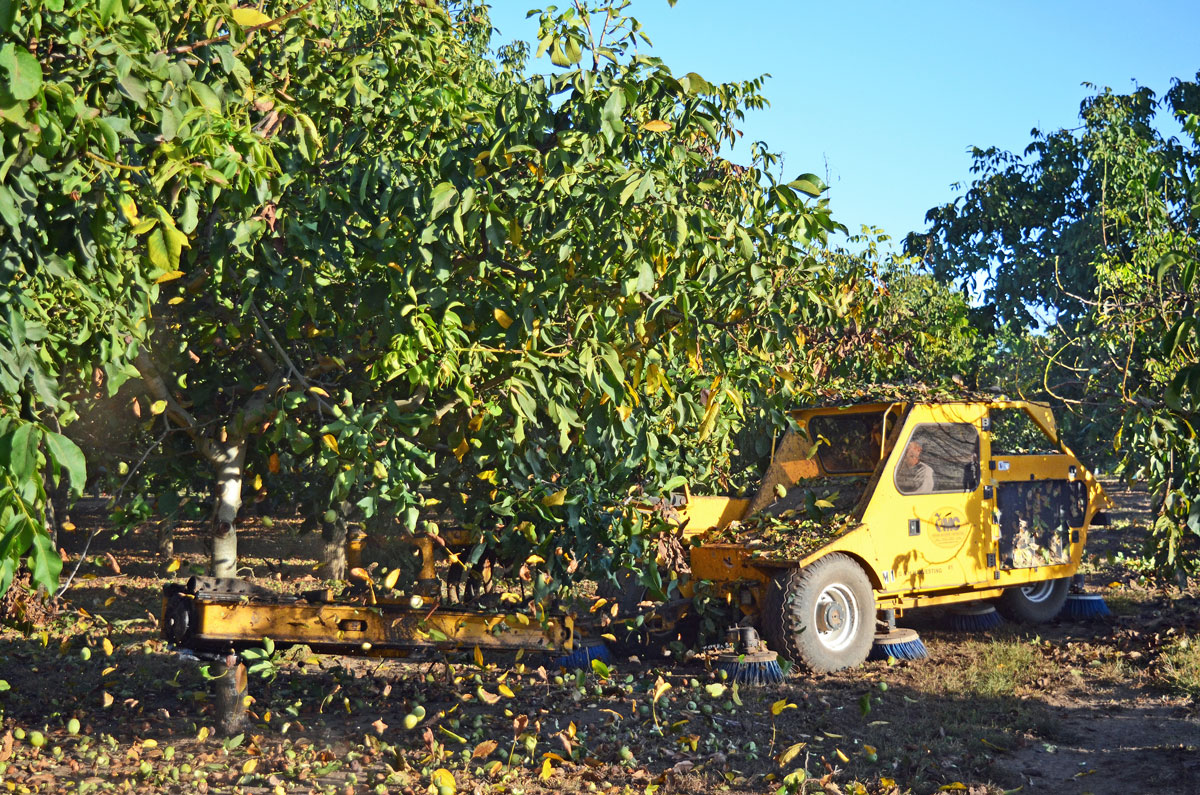
Cracking out and identifying the sources of insect damage in walnut and almond harvests can provide insight into how well your pest control program is working.
Grade sheets received from the processor after delivery will tell you the percent of insect damage in the load, but not which insect pest is the culprit. Sampling nuts in the windrows after shaking is a way of determining which insect pest to target and if there are particular hot spots in an orchard. This information shows the efficacy of the specific management programs for each of your major pests this year. The information also sets the stage for next year’s control strategies.

University of California Cooperative Extension farm advisors also recommend taking harvest samples and identifying pest damage, as the information will establish block-specific records, to gauge trends in progress over several years.
The main insect pests in almonds include navel orangeworm, peach twig borer, oriental fruit moth, ants and plant bugs.
Insect damage most commonly found in walnut harvest samples include navel orangeworm (NOW), codling moth (CM), and walnut husk fly (WHF).
In addition, sunburn, oilless nuts and mold may be evident in harvest samples.
To obtain a representative sample of nuts from each block, they should be collected from multiple areas. Nuts selected from windrows should be taken from all layers. Damaged nuts will weigh less and more of them will be found on the top of the windrow.
If there will be a time lag between collection and cracking out, the samples should be refrigerated. Hull removal for walnuts should be done within a few days of collection and hull infestation observations recorded.
Once hulls are off, dry nuts can be held in cold storage. Freezer temperatures are recommended for long-term storage and have the benefit of preserving pest developmental stage.
When finding worm damage, note the size and stage of development- larvae, pupae and emerged pupae- as it indicates when the infestation occurred. Comparing the stages with treatment records can help with improving management in the future through a refined spray timing strategy.
In almonds, kernel damage can reveal predominant insect pests. Deep chewing, frass, webbing and boring are signs of NOW damage. Peach twig borer will leave shallow channels and surface grooves on kernels, but no frass, webbing or boring. Oriental fruit moth will also leave shallow channels and surface grooves on kernels along with some frass. Plant bug feeding will cause dark spots on the kernel. Ants will cause scraping or peeling of kernel skin, drilling into the kernel, and sawdust. Ants are a particular concern this year, if the record crops leads to longer durations of the almonds sitting on the orchard floor.










